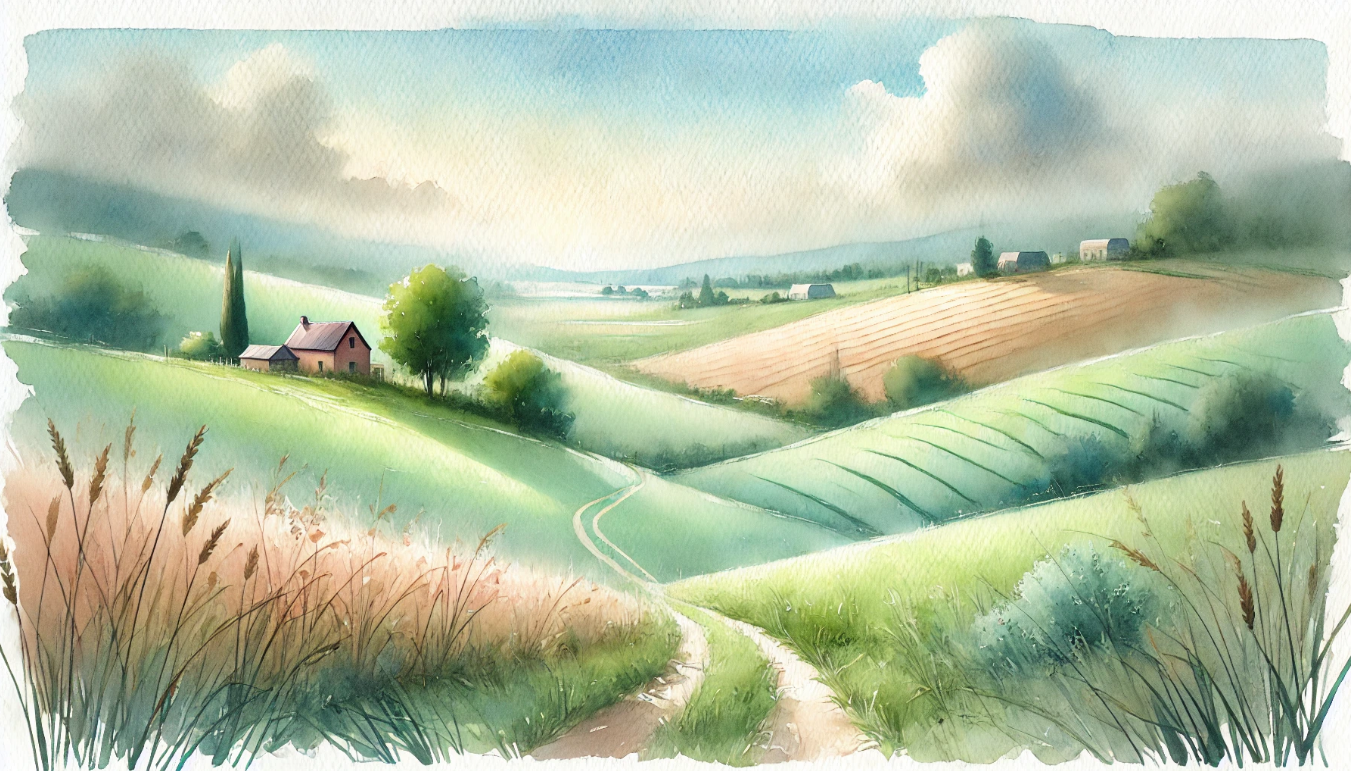Watercolor Color Mixing and Transparency
Watercolor painting is a captivating art form that has enchanted artists and enthusiasts for centuries. One of its most essential aspects is understanding color mixing and transparency, both of which play a crucial role in creating vibrant and luminous works of art. This guide will help you explore the nuances of watercolor color mixing and transparency, providing valuable insights and techniques to enhance your skills.
Why Transparency is Key to Watercolor Painting
Unlike opaque mediums like acrylic or oil, watercolor thrives on translucency. Light passes through the layers of paint, reflecting off the paper and creating a unique glow. This characteristic sets watercolor apart, allowing artists to achieve depth, subtle color shifts, and a luminous quality. Mastering transparency is essential for creating dynamic, eye-catching compositions.
How Watercolor Differs from Other Mediums in Color Mixing
Watercolor’s transparency influences how colors mix and interact. Unlike oils or acrylics, where colors can be layered opaquely, watercolor blending happens both on the palette and directly on the paper. This method requires a delicate balance to prevent muddy colors while maintaining clarity and depth.
Understanding Transparent vs. Opaque Pigments
What Makes a Pigment Transparent?
A pigment’s transparency is determined by the size of its particles and how it interacts with the medium. Transparent pigments allow light to pass through, creating soft, glowing layers. In contrast, opaque pigments have larger particles that block light, producing solid, non-translucent areas.
Why Transparent Pigments are Ideal for Layering
Artists favor transparent pigments for layering and glazing techniques. Each layer builds upon the previous one, allowing underlying colors to shine through and creating rich, multidimensional compositions. This approach is key to achieving depth and realism in watercolor paintings.
The Role of Transparency in Color Mixing
Mixing Clean, Vibrant Colors
By using transparent pigments, artists can mix colors directly on the paper, resulting in luminous, fresh hues. The glazing technique—applying a thin layer of color over a dried layer—enhances the vibrancy and complexity of colors.
Transparency’s Impact on Depth and Luminosity
Layering transparent colors allows light to bounce through multiple layers, creating a three-dimensional effect. This adds realism and visual interest, making elements like sky, water, and glass appear dynamic and luminous.
Exploring the Color Wheel in Watercolor
Primary and Secondary Colors
Understanding the color wheel is fundamental to mixing vibrant hues. The primary colors—red, blue, and yellow—combine to create secondary colors like green, orange, and purple. In watercolor, these mixtures maintain their transparency when used carefully.
Warm vs. Cool Colors and Their Impact on Transparency
Warm colors (reds, yellows, oranges) tend to be more opaque, whereas cool colors (blues, greens, purples) often have greater transparency. Mixing warm and cool tones requires careful adjustment to maintain the intended brightness and translucency.
Techniques for Mixing Transparent Colors
Wet-on-Wet vs. Wet-on-Dry
- Wet-on-Wet: Colors blend naturally on a damp surface, creating soft transitions—perfect for skies and water.
- Wet-on-Dry: Color is applied on dry paper, offering more control and precise layering.
Creating Gradients with Transparent Colors
Gradients are achieved by gradually diluting the pigment with water. This technique allows artists to create seamless color transitions that add depth and movement to their paintings.
Layering and Glazing to Enhance Transparency
Building Depth with Layers
Each layer of transparent watercolor contributes to the final depth of a painting. By patiently building multiple layers, artists can achieve stunning visual complexity.
The Importance of Drying Time
To prevent colors from unintentionally mixing, layers should be completely dry before applying another wash. This preserves the clarity and luminosity of each layer.
Common Mistakes in Watercolor Color Mixing
Avoiding Muddy Colors
Overmixing or combining too many colors at once can result in dull, muddy hues. To maintain brightness, artists should limit their palette and layer colors gradually.
Overmixing Colors
Excessive blending can cause colors to lose their vibrancy. Instead, artists should allow colors to interact naturally on the paper for organic, harmonious blends.
Case Study: Achieving Luminous Colors with Transparency
A professional artist’s step-by-step process:
- Sketch a light outline of the subject.
- Start with a thin, transparent wash using the wet-on-wet technique.
- Apply glazing layers once each previous layer has dried completely.
- Use a limited palette to maintain clarity and avoid muddying.
- Adjust the intensity by layering complementary colors subtly.
The result? A painting full of depth, vibrancy, and glowing transparency.
Final Thoughts on Mastering Watercolor Transparency
Why Practice is Essential
Mastering watercolor requires consistent practice. Testing different pigments, blending techniques, and layering approaches will help artists refine their skills and develop their unique style.
Finding Your Unique Color Palette
Experimenting with various transparent pigments allows artists to discover combinations that best suit their artistic voice. Over time, this process leads to the creation of a signature palette that reflects an artist’s personal style.
In conclusion, understanding color mixing and transparency in watercolor is key to creating luminous, expressive paintings. By embracing these techniques, artists can unlock watercolor’s full potential and bring their artistic visions to life.





